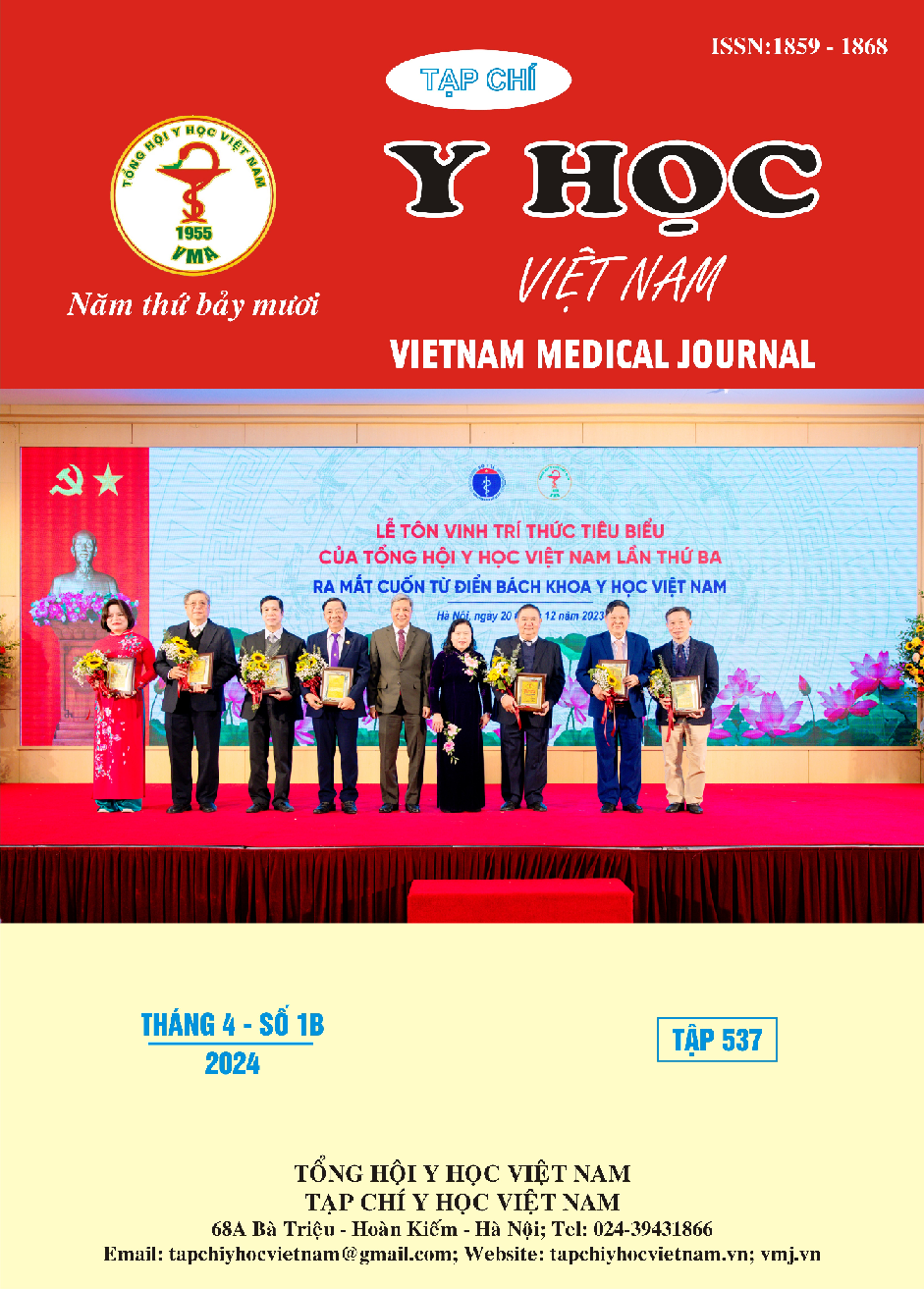RESULTS OF ENDOSCOPIC INTERLAMINA SURGERY TO TREAT DISC HERNIATION LUMBAR
Main Article Content
Abstract
Introduction: Disc herniation occurs when the components of the intervertebral disc, including the nucleus pulposus or annulus fibrosus, shift out of their normal position within the disc space, causing compression of the spinal canal or nerve roots and resulting in localized pain and radiating symptoms along the corresponding nerve root territory. Interlaminar endoscopic surgery is an advanced method with numerous superior advantages: small incisions, high effectiveness, and safety. However, there is still limited research on the treatment outcomes of this method. Material and methods: This is a descriptive prospective study on patients with lumbar disc herniation who underwent interlaminar endoscopic surgery for herniated disc. Results: Sixty cases of lumbar disc herniation underwent interlaminar endoscopic surgery for herniated disc approach from May 2023 to October 2023, including 42 males and 18 females. The average age was 43.48 years (ranging from 16 to 84 years), primarily consisting of working professionals. The main clinical symptoms were low back pain syndrome (100%), nerve root compression symptoms (98.33%), and adjacent muscle stiffness (66.6%). All patients had good postoperative outcomes, with fast recovery and early discharge from the hospital. Nerve symptoms improved, except for one case of recurrent herniation one month after surgery. Conclusion: This method proves to be safe and effective in treating lumbar disc herniation. Title: Surgical Treatment Outcomes of interlaminar endoscopic surgery for herniated disc lumbar Construct at the Department of Spine Surgery, Viet Duc University Hospital from 05/2023 to 10/2023
Article Details
References
2. Steven Garfin Frank Eismont Gordon Bell Christopher Bono Jeffrey Fischgrund. Rothman-Simeone and Herkowitz’s The Spine. In: 7th Edition. Elsevier.
3. Ammerman J, Watters WC, Inzana JA, Carragee G, Groff MW. Closing the Treatment Gap for Lumbar Disc Herniation Patients with Large Annular Defects: A Systematic Review of Techniques and Outcomes in this High-risk Population. Cureus. 11(5): e4613. doi:10.7759/ cureus.4613
4. Nguyễn Văn Thạch. Nghiên cứu thực trạng, các yếu tố nguy cơ và các phương pháp điều trị thoát vị đĩa đệm cột sống. Báo cáo tổng hợp kết quả khoa học công nghệ đề tài, Đề tài độc lập cấp nhà nước. Bệnh viện Hữu nghị Việt Đức. Published online 2011.
5. Kanno H, Aizawa T, Hahimoto K, Itoi E. Minimally invasive discectomy for lumbar disc herniation: current concepts, surgical techniques, and outcomes. Int Orthop. 2019;43(4):917-922. doi:10. 1007/s00264-018-4256-5
6. Yuan C, Wang J, Zhou Y, Pan Y. Endoscopic lumbar discectomy and minimally invasive lumbar interbody fusion: a contrastive review. Wideochir Inne Tech Maloinwazyjne. 2018;13(4):429-434. doi:10. 5114/wiitm.2018.77744
7. Yin J, Jiang Y, Nong L. Transforaminal approach versus interlaminar approach: A meta-analysis of operative complication of percutaneous endoscopic lumbar discectomy. Medicine. 2020; 99(25): e20709. doi: 10. 1097/MD. 0000000000020709
8. Chen KT, Jabri H, Lokanath YK, Song MS, Kim JS. The evolution of interlaminar endoscopic spine surgery. J Spine Surg. 2020;6(2):502-512. doi:10.21037/jss.2019.10.06
9. Daniel H. Kim, Sang-Ho Lee, Gun Choi. Endoscopic Spine Procedures. Thieme; 2011.


